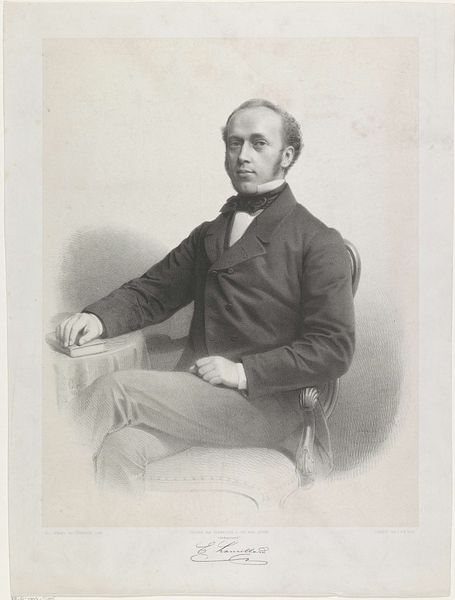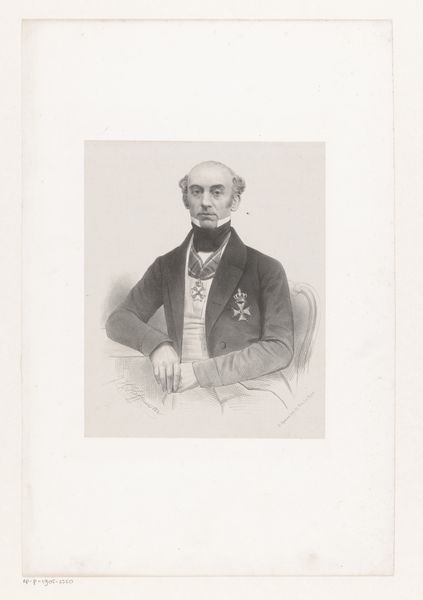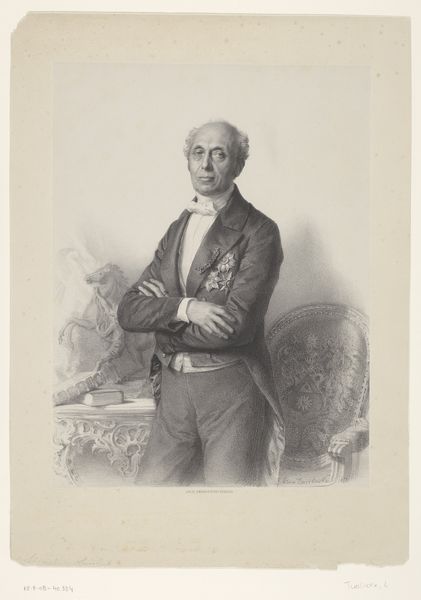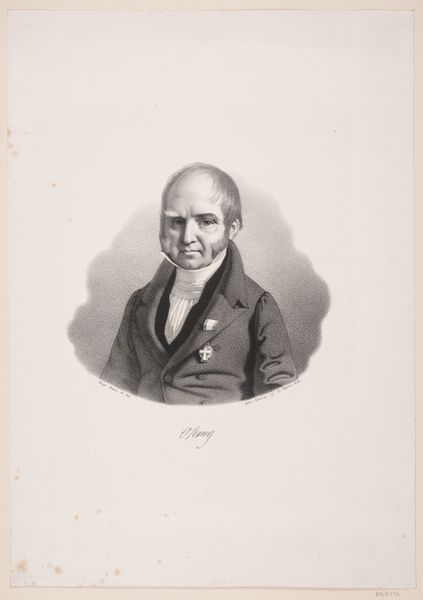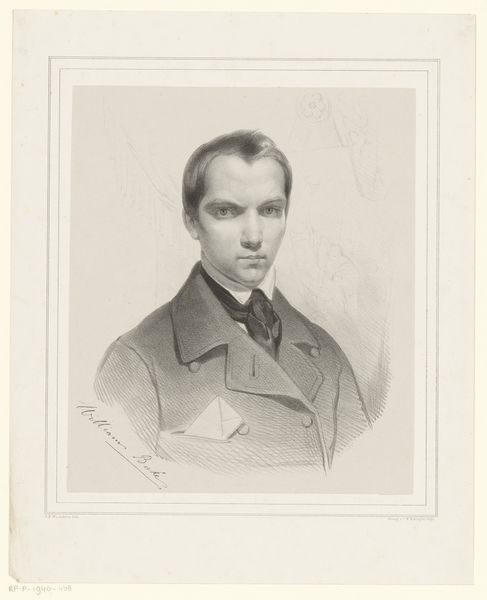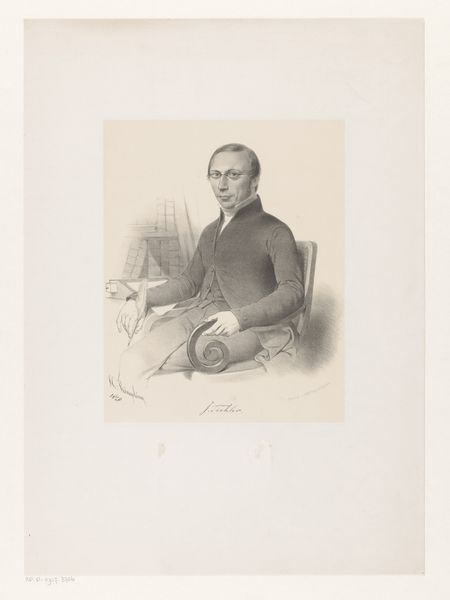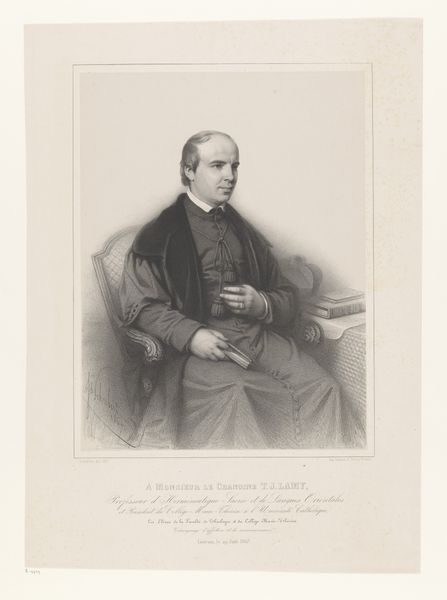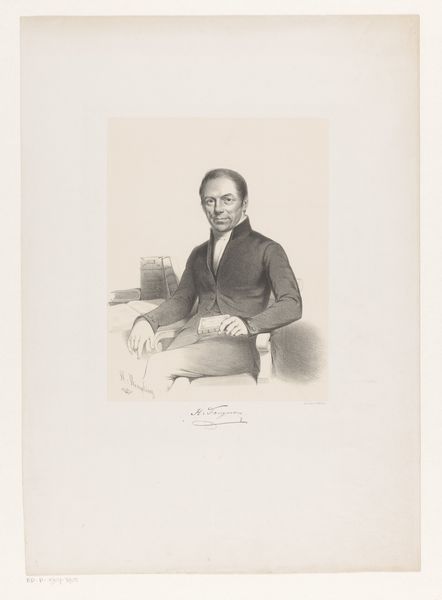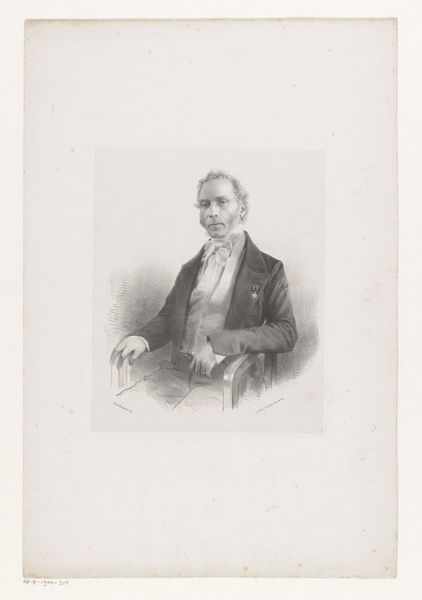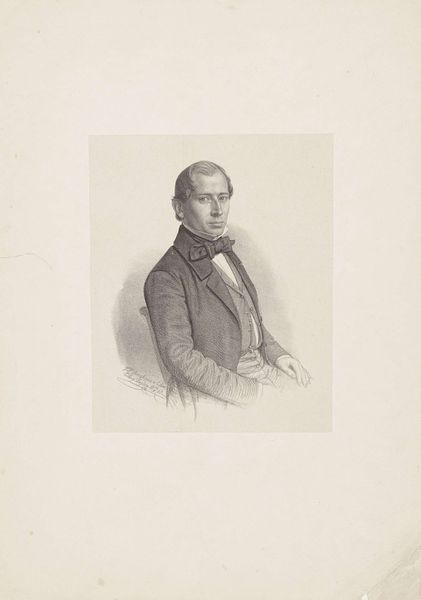
lithograph, paper
#
portrait
#
neoclacissism
#
lithograph
#
paper
#
historical photography
#
history-painting
#
poster
Dimensions: height 534 mm, width 373 mm
Copyright: Rijks Museum: Open Domain
Curator: Welcome. Before us hangs a lithograph dating from between 1840 and 1865: a portrait of Willem II, King of the Netherlands. Editor: It has a certain formal austerity. The subdued greyscale palette focuses attention. Is that neoclassical influence I'm sensing? Curator: Precisely. Note the conscious attempt to position Willem within the established visual language of power and legitimacy, leaning into that Neoclassical ideal of leadership that was gaining popularity through portraits. The choice of lithography, enabling broader dissemination, is also significant, it serves to circulate a very particular image of monarchy. Editor: Lithography gives the work its wonderful range of tones. Notice the subtle gradations across the king’s face. I would point your attention to the contrast created with the soft folds of the drapery, and the sharp edges of the book to create balance and to imply regal comfort with academic thought. The composition clearly intends to convey intelligence, if the accoutrements did not! Curator: Undoubtedly. It presents him as a figure of authority and enlightenment, vital for reassuring the public of political stability following the Napoleonic era. Editor: I would also call your attention to his gaze, which strikes the viewer directly to forge a visual and psychological relationship to encourage a belief of truthfulness, to evoke and instill faith. Curator: These portraits weren't simply aesthetic objects, you see. They were active participants in the construction of national identity. What image do we, as a people, wish to create and convey? And that image must hold power. Editor: Indeed, it is the stark simplicity in the colour palette, the composition, that suggests truth in a time of turmoil, it so clearly sets a standard for truthfulness to the Dutch populous. Curator: Looking at the function of this piece allows one to ask deeper questions about the use of royal images and their roles as public relations in the era. Editor: An important painting to observe on a semiotic level too, revealing truths both intended and otherwise.
Comments
No comments
Be the first to comment and join the conversation on the ultimate creative platform.
